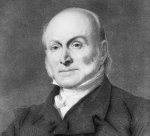 [NOTE: Recently, I finished reading Tiya Miles’s fine study, The House on Diamond Hill: A Cherokee Plantation Story, the history of the property we now know as the Chief Vann House State Historic Site, in Chatsworth, Georgia.
[NOTE: Recently, I finished reading Tiya Miles’s fine study, The House on Diamond Hill: A Cherokee Plantation Story, the history of the property we now know as the Chief Vann House State Historic Site, in Chatsworth, Georgia.
The House on Diamond Hill reminded me of road trips my wife and I took a number of years ago. At that time, I was researching the evolution of political parties and factions in Georgia after 1806. One of the issues I already knew would give me trouble was Indian removal. So, I decided to “walk (some of) the ground” involved in the drama of Georgia’s expropriation of lands from her Native American inhabitants.
What follows are excerpts from my research journal.]
* * * * *
Thurs., Mar. 8, 2007 (McIntosh Reserve Park, Carrollton, Ga.)
We own a book entitled 60 Hikes Within 60 Miles of Atlanta; today we made a 110 mile round trip to go on one of those hikes–at the McIntosh Reserve Park, south of Carrollton, Ga. It is the site where Creek Chief William McIntosh was assassinated/legally executed by his fellow tribesmen (depending upon whether you believe Georgia Governor George Troup or the Creek National Council) for his role in negotiating the corrupt Treaty of Indian Springs (1825), transferring all of the Creeks’ remaining land to Georgia, apparently at the behest of his cousin, Governor Troup.
McIntosh’s killers burned down his house, but Carroll County has replaced it with a purportedly similar structure, moved to the site from a lot near Centre, Ala. It’s a two-story, dog-trot cabin that now sits across from William McIntosh’s grave. The building is open, and, as we walked through it this morning, the main question I had was, “Which direction(s) did his killers come from?”
The restored homestead is within perhaps a quarter of a mile of the Chattahoochee River. We weren’t sure we even found the “walking trail” we were looking for, but at least we saw the house and McIntosh’s grave. As has been the case on several earlier “research trips” to sites related to my project [see below], I’m not really sure how useful this one will be, but the visit was certainly not wasted.
* * * * *
Sat., Oct. 14, 2000 (North Georgia–The “Chieftains Trail”)
We drove north for an hour or so on I-75 to Ga. Rte. 225. About three miles east on Rte. 225 is the site of New Echota, the one-time capital of the Cherokee Nation. Maintained as a state historic site, New Echota is a shadow of its former self, yet quite suggestive nonetheless. The only original building still on the site is the home of missionary Samuel A. Worcester, of Worcester v. Ga. fame. Other period buildings have been moved to New Echota, however, and these show how middle-class and common Cherokee families lived on their farmsteads: a cabin, barn, corn crib, and smokehouse on the “middle-class” farm and a cabin, stable, corn crib, and smokehouse on the “common” one.
Another period structure, Vann’s tavern, has been relocated to New Echota, and reconstructed versions of the tribe’s Council building; Print Shop [where the Cherokee Phoenix was published]; and Supreme Court building complete the display. As a bonus, the state Natural Resources Department has created a mile-long nature trail that winds around the rear of the Worcester home. The Visitors Center has a small museum featuring lots of artifacts dug up on the grounds, as well as a tiny library and movie theater.
A couple of notes on progress, sort of: 1) A one-time Cherokee farm on the other side of Rte. 225 has been transformed into a golf course. 2) The Worcester House was occupied by a series of white farmers following the missionary’s forced eviction. The last farmer moved away in the 1950s, at which time a group of local citizens bought the property with an eye towards its renovation as a memorial to the Cherokees.
About seventeen miles farther east on Rte. 225 is the Vann House, the noblest edifice by far in the modern-day hamlet of Spring Place. It sits on a knoll overlooking the spring that gives the town its name (though we could not see it), at the intersection of routes 225 and 52A. The state Department of Natural Resources, which manages the house, is currently building a new visitors center, so there was a temporary parking area and a rather crowded entry hall in the house itself for books, other souvenirs, and, of course, a cash register.
I already knew quite a bit about Spring Place from my newspaper research. One of the earliest white settlements in Murray County, it was the headquarters of Colonel William N. Bishop, commander of the Georgia Guard and one of Governor Wilson Lumpkin’s most notorious agents in the Cherokee Territory. I had also taken copious notes on the shootout at the Vann House in 1835 between Bishop and Spencer Riley, a supporter of the anti-Lumpkin State Rights Party, but had never actually been there before today. . . .
I was surprised, but guess I shouldn’t have been, when our feisty, 60-something tour guide regaled us with the story of the Bishop-Riley encounter first thing. She told us that, as we reached the landing halfway up to the second floor, we would be able to see the very spot where Bishop and his minions had tossed a burning log in a successful effort to “smoke Riley out”—and we did. Evidently, Bishop had arrived to claim the Vann House for the state (I believe his brother Abraham eventually ended up running a tavern and store there), only to have Riley, who was boarding at the Vann House, enter his own claim and refuse to leave. Thus the gunplay, in which Riley was wounded and hauled off to the jail in Cassville “through the snow,” where, in his version of events, he narrowly escaped assassination at the hands of a Bishop loyalist.
As was the case at New Echota, there are very few original items at the Vann House, but period pieces have been brought in, and they suggest something of the affluence of the last Cherokee owner, “Rich Joe” Vann, who inherited the house after his father’s murder in a tavern sixty miles away. The basement, which puts the “d” in “dank,” was divided into a wine cellar and a dungeon for unruly slaves (the “civilized” Cherokee Joseph Vann owned a couple of hundred slaves). There are guest bedrooms on the second floor and two children’s rooms on the “vertically challenged” third floor, with its low doorways, steep stairs, and six-foot ceilings.
Once again, progress has not been kind to the Vann House. There it sits, like a diamond in a dunghill, looking down on a four-way stop intersection and a mini-mart. Nevertheless, it was certainly worth the trip!
* * * * *
Mon., July 14, 2008 (Rome, Ga.)
We drove to the Chieftain’ Museum/Major Ridge Home, which was a disappointment. It had originated in the early 1800s as a two-story log house in dog-trot style, but even before Ridge left for the West, it had been made over into what the Museum calls a “New England style plantation house.” After Ridge’s involuntary departure, the house was further modified. When it wound up on one corner of the vast Celanese industrial complex, the house served as the home of the plant manager.
In its latest incarnation, as the Chieftains Museum, Ridge’s home is mostly just a structure to hold an eclectic collection of displays and artifacts having to do with the Cherokees, on the main floor, with the upper floor given over to a meeting room and office space. On both floors, one section of wall has been laid bare to show something of the original construction, with the evolution of the house explained on a poster mounted on the bared section on the main floor.
* * * * *
Thurs., July 28, 2011 (Cherokee, N.C.)
. . . We spent a couple of hours this afternoon in the Museum of the Cherokee Indian in downtown Cherokee, North Carolina, and it was pretty impressive. The displays covered the whole span, from ancient America through the Trail of Tears, and beyond. The tone was, as one might expect, on the sentimental side at times, but I found the treatment of Cherokee removal and the Trail of Tears surprisingly even-handed on the whole.
We are staying in a motel near downtown, in a suite named after a Cherokee leader I’ve never heard of, but we are next to the Chief David Vann suite and right below the John Ross suite (both names I’m familiar with). We also drove into downtown Cherokee, but the part we saw was just drenched in what, for lack of a better term, I’ll call “Cherokee kitsch.” (Or perhaps “tourist kitsch” is more accurate?) I’ve never seen so many shops selling leather goods, tomahawks, t-shirts, etc., all on Cherokee themes, of course.
Tomorrow, we plan to go to a reconstructed Cherokee village near the museum. It’s set up as a “living history” center, like Williamsburg, Va., but about the Cherokees, . . . .
Fri., July 29, 2011 (Cherokee, N.C.)
. . . [W]e arrived at our first stop, the Ocanoluftee Indian Village, just about opening time, 9:00 am. There were only four of us in the first tour group; our guide, a fast-talking young man named Joel, who looked like he might be a high school junior, did a terrific job. He certainly knew his Cherokee culture, history, and language, but he delivered his talk with enough modern expressions to keep us loose.
Joel escorted us through most of the stops, all of them representing a Cherokee village, c. 1750. About half the exhibits involved crafts, and most were created by older members of the tribe. We saw basket weaving, pottery, a demonstration of weapons, a canoe being hollowed out, weaving, and the making of beaded belts. There also were a few examples of Cherokee dwellings, showing the evolution of the structures over time.
Another Cherokee, Don, spoke to us at the council ring, explaining cultural aspects like masks, religion, the evolution of the Cherokee language, dances, and musical instruments. The final presentation, on Cherokee “government” before the adoption of the tribal constitution modeled on that of the United States, was given by a woman who also talked about the seven clans, as had Don before her. Fascinating stuff, and it reinforced a number of things we had read about and seen yesterday in the Museum of the Cherokee Indian. Leaving the village, we drove back to Cherokee to walk on Oconaluftee Island, and the short, so-called River Trail.
* * * * *
Our next stop was the Great Smoky Mountains National Park, a couple of miles away. There, we walked the longer section of the River Trail, an in-and-out, mostly shaded hike of perhaps three miles all told. . . . We might have left then, but we decided to visit the “Mountain Farm” that has been recreated behind the Visitors Center, between the river and the first part of the River Trail. It was typical National Park Service minimalism (not a bad thing, mind you), comprised of structures moved to the site from their original locations. The result was “farms” that were probably more elaborate than most white farmers actually owned in the early nineteenth century. In addition to the cabin, there were also a barn, a chicken coop, an apple house, blacksmith shop, two corn cribs, a smokehouse, and a spring house. [An interesting contrast to the middle-class and common Cherokee farms re-created at New Echota.]
_______________
For those interested in reading more about Georgia History, here are links to my books on the subject:
 Rancorous Enmities and Blind Partialities: Parties and Factions in Georgia, 1807-1845 (University Press of America, 2015)
Rancorous Enmities and Blind Partialities: Parties and Factions in Georgia, 1807-1845 (University Press of America, 2015)
In Pursuit of Dead Georgians: One Historian’s Excursions into the History of His Adopted State (iUniverse, 2015)
Politics on the Periphery: Factions and Parties in Georgia, 1783-1806 (University of Delaware Press, 1986)


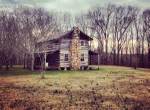
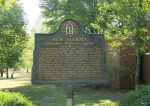
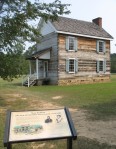



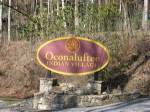




Just found your blog and I love it! I am gathering information for a fictionalized book, loosely based on my family. My family is black (mulatto). I have visited the archives and have a few family records. I want to know more about slavery, Creek and Cherokee indians who owned slaves and blacks history for those who were not slaves. The period is 1800 or so through about 1950. I am interested in reading material specific to the following towns and or counties: Wrightsville, Sopeton, Dublin, Swainsboro, Mt. Vernon. I know Soperton was established after the Civil War from the counties of Emanuel, Montgomery, Laurens and Johnson. I also know that Savannah and Augusta can’t be left out of this collection of history. Any blogs, history pieces, books or other resources would be appreciated. Thanks.
Pat,
I just finished commenting on your blog when I noticed that you had left a comment on my recent post–great minds run in the same channel, and all that. . . . But, seriously, have I got a lead for you!
Tiya Miles, author of the history book, The House on Diamond Hill, mentioned in my recent post, “Creeks and Cherokees: Walking Native Ground,” also wrote a novel based on her research! It’s called The Cherokee Rose and is available at amazon.com. I also read that novel, because I’ve long been fascinated with the notion of writing a historical novel based upon a subject I’ve researched as a non-fiction topic (though I doubt I’ll ever do it).
Anyway, the premise of Miles’s novel, The Cherokee Rose, is that several characters interested, for different reasons, in the Vann House (subject of her history monograph, remember) interact there, in the modern era. Her main character is an Afro-Cherokee woman from Oklahoma who’s sort of an amateur tribal historian and comes east to check out the Vann House, which, in the novel anyway, is in danger of being purchased by a developer. And, in the course of the novel, Miles does exactly what you hope to do: she recreates life at the site in the early 19th century, based upon what she discovered while researching her other, straight history, book.
Now, is it a good novel? In my opinion, it’s OK, but not nearly as good as The House on Diamond Hill; yet, I think you would learn some things from reading it.
Hope this helps, and, whether it does or not, good luck with your novel!
George Lamplugh
I will certainly review both them. Thanks!
You are certainly welcome!